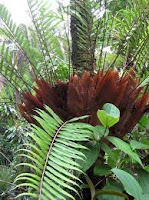Introduction
There are millions of organisms living on Earth. These organisms differ in shape, size, structure, e.t.c. When studying such a vast biodiversity, the necessity of classification emerged. According to Robert H. Vitaker's 5-kingdom classification, organisms were classified into:
- Monera
- Protista
- Fungi
- Plantae
- Animalia
In this blog, organisms are classified under 3 main groups:
- Plants
- Animals
- Micro-organisms
Plants
Plants are divided into 2 main groups as follows- Flowering Plants (Angiospermae)
- Non Flowering Plants
 |
| Flowering plants |
 |
| Non Flowering Plants |
Flowering Plants
Plants which bear flowers are known as flowering plants or angiospermae. These plants are further divided into 2 groups depending on the number of cotyledons (seed leaves) in their seeds.One cotyledon in seed.
Fibrous root system in plant.
Generally unbranched stem.
Hollow stem.
Parallel venation in leaves.
Narrow leaves.
Flower parts in multiples of 3.
Examples:Grass, Bamboo,Paddy, Coconut

Dicotyledonous leaf Dicotyledonous Plants
Two cotyledons in seed
Tap root system in plant
Generally branched stem
Solid stem.
Reticulated (Networked) venation in leaves.
Broad leaves.
Flower parts in multiples of 4 /5.
Examples:Mango, Beans,Chillie, Banyan
Non Flowering Plants
Non flowering plants can be further classified into 2 groups :Non flowering plants with seeds (Gymnospermae)
Examples : Cycas - In this plant, the male & female plants exist separately.The female plant has mega sporophyll, & the male plant has a cone with micro sporophyll.
Pinus - These plants are conifers, or cone-bearing plants.Open seeds are located on cones.
 |
| Pinus |
 |
| Cycas |
Non flowering plants without seeds
 |
| Liverwort- Marchantia |
Examples :
Bryophyta-
These are of 2 types :Liverworts-Marchantia
Moss- Poganatum
 |
| Selaginella |
 |
| Drynaria |
Pterophyta (Ferns) - Drynaria, Nephrolepis




No comments:
Post a Comment